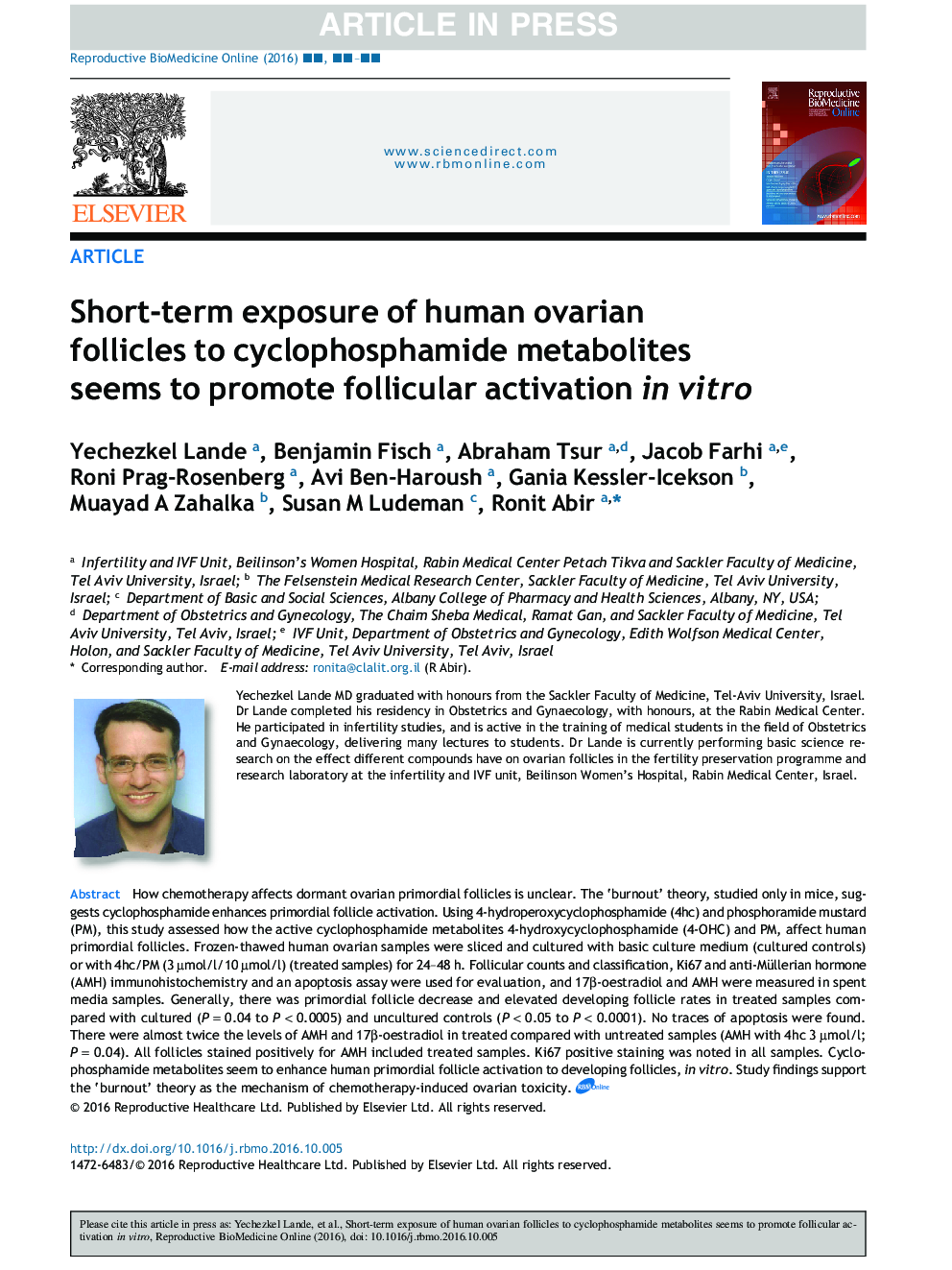| کد مقاله | کد نشریه | سال انتشار | مقاله انگلیسی | نسخه تمام متن |
|---|---|---|---|---|
| 5696818 | 1410277 | 2017 | 12 صفحه PDF | دانلود رایگان |
عنوان انگلیسی مقاله ISI
Short-term exposure of human ovarian follicles to cyclophosphamide metabolites seems to promote follicular activation in vitro
ترجمه فارسی عنوان
به نظر می رسد در معرض مواجهه کوتاه مدت فولیکول های تخمدان با متابولیت های سیکلوفسفامید، فعال شدن فولیکولار در آزمایشگاه
دانلود مقاله + سفارش ترجمه
دانلود مقاله ISI انگلیسی
رایگان برای ایرانیان
کلمات کلیدی
موضوعات مرتبط
علوم پزشکی و سلامت
پزشکی و دندانپزشکی
زنان، زایمان و بهداشت زنان
چکیده انگلیسی
How chemotherapy affects dormant ovarian primordial follicles is unclear. The 'burnout' theory, studied only in mice, suggests cyclophosphamide enhances primordial follicle activation. Using 4-hydroperoxycyclophosphamide (4hc) and phosphoramide mustard (PM), this study assessed how the active cyclophosphamide metabolites 4-hydroxycyclophosphamide (4-OHC) and PM, affect human primordial follicles. Frozen-thawed human ovarian samples were sliced and cultured with basic culture medium (cultured controls) or with 4hc/PM (3âµmol/l/10âµmol/l) (treated samples) for 24-48âh. Follicular counts and classification, Ki67 and anti-Müllerian hormone (AMH) immunohistochemistry and an apoptosis assay were used for evaluation, and 17β-oestradiol and AMH were measured in spent media samples. Generally, there was primordial follicle decrease and elevated developing follicle rates in treated samples compared with cultured (P = 0.04 to P < 0.0005) and uncultured controls (P < 0.05 to P < 0.0001). No traces of apoptosis were found. There were almost twicethe levels of AMH and 17β-oestradiol in treated compared with untreated samples (AMH with 4hc 3âµmol/l; P = 0.04). All follicles stained positively for AMHincluded treated samples. Ki67 positive staining was noted in all samples. Cyclophosphamide metabolites seem to enhance human primordial follicle activation to developing follicles, in vitro. Study findings support the 'burnout' theory as the mechanism of chemotherapy-induced ovarian toxicity.
ناشر
Database: Elsevier - ScienceDirect (ساینس دایرکت)
Journal: Reproductive BioMedicine Online - Volume 34, Issue 1, January 2017, Pages 104-114
Journal: Reproductive BioMedicine Online - Volume 34, Issue 1, January 2017, Pages 104-114
نویسندگان
Yechezkel Lande, Benjamin Fisch, Abraham Tsur, Jacob Farhi, Roni Prag-Rosenberg, Avi Ben-Haroush, Gania Kessler-Icekson, Muayad A. Zahalka, Susan M. Ludeman, Ronit Abir,
